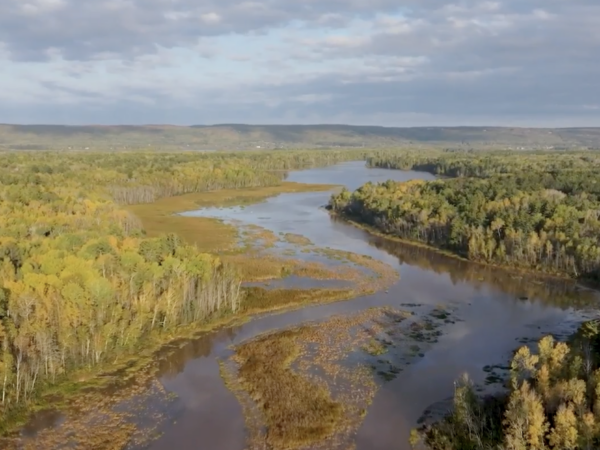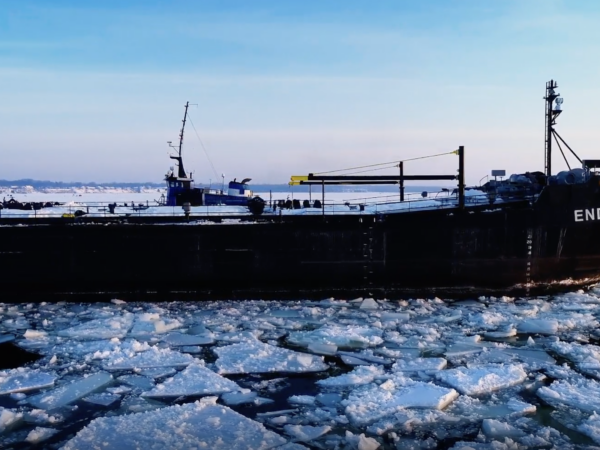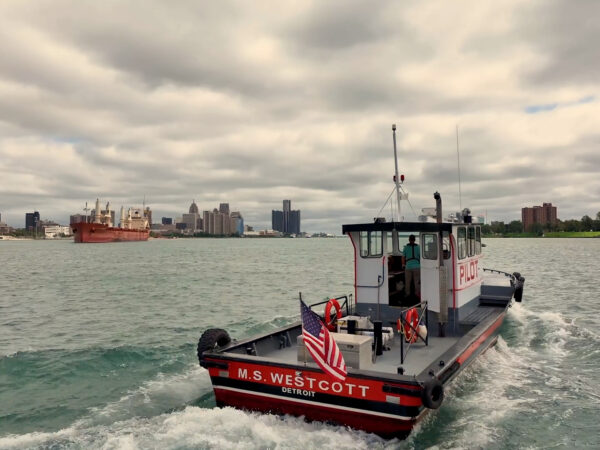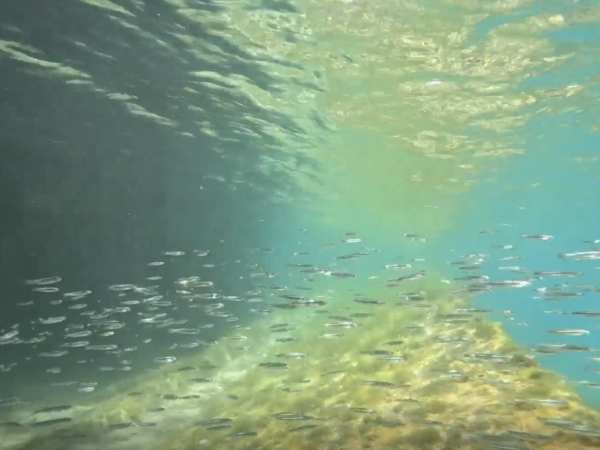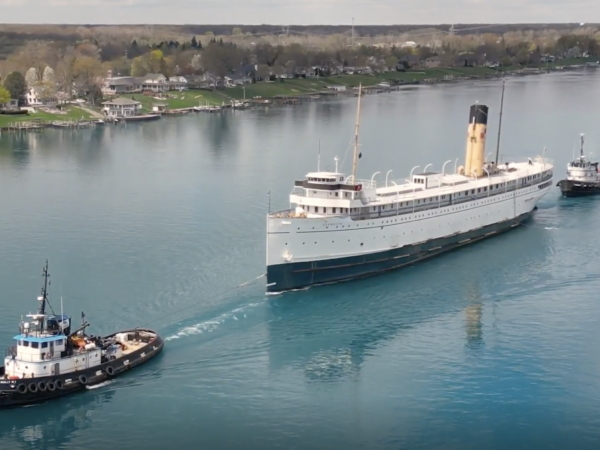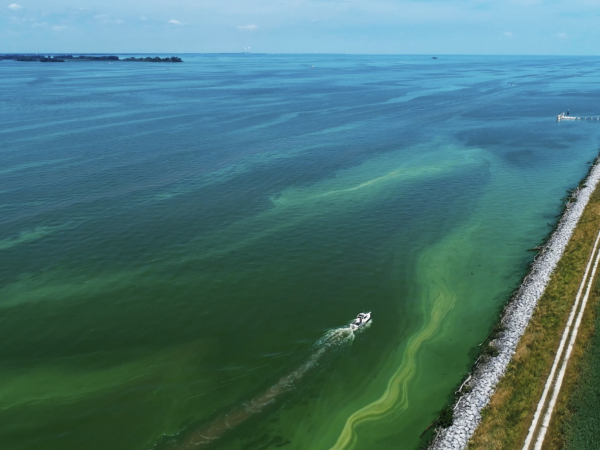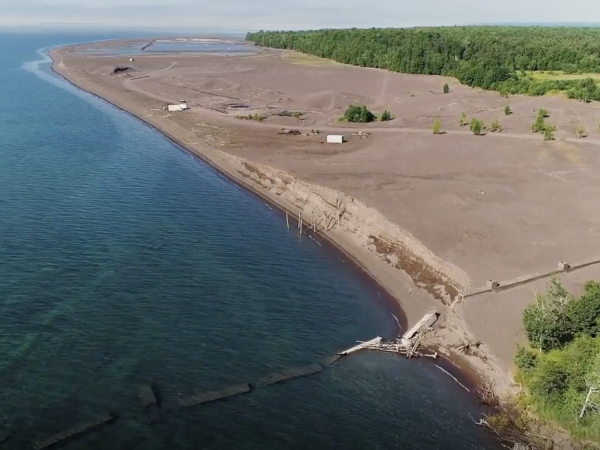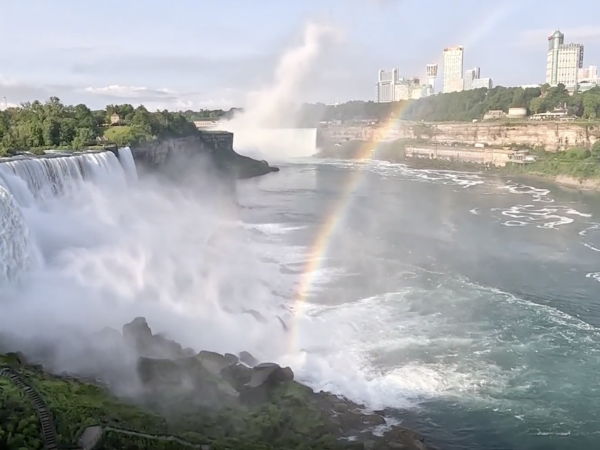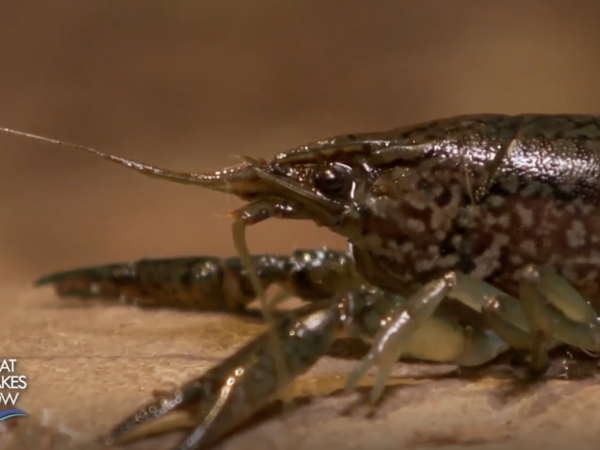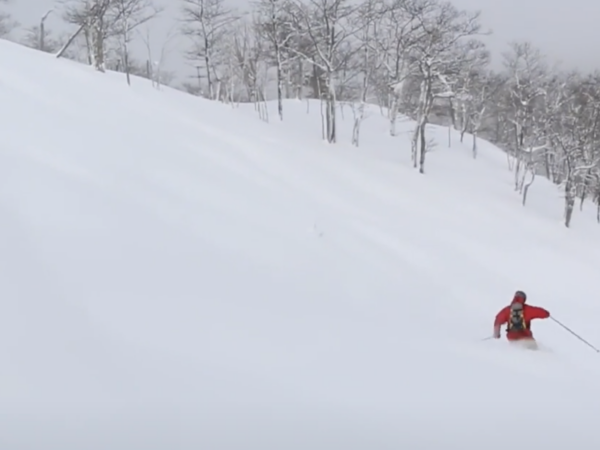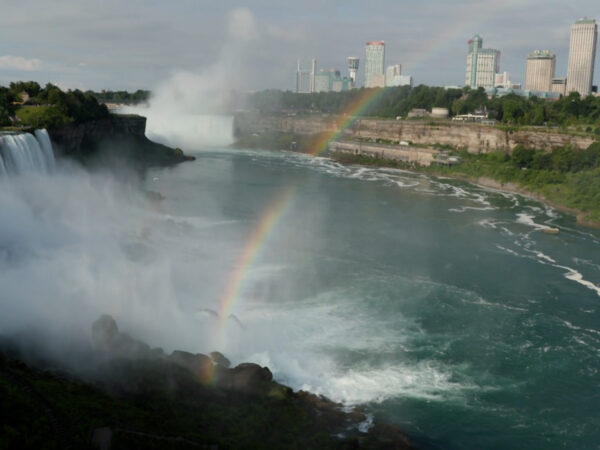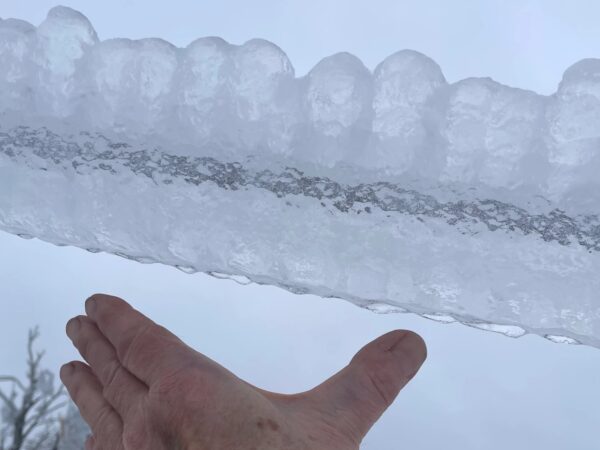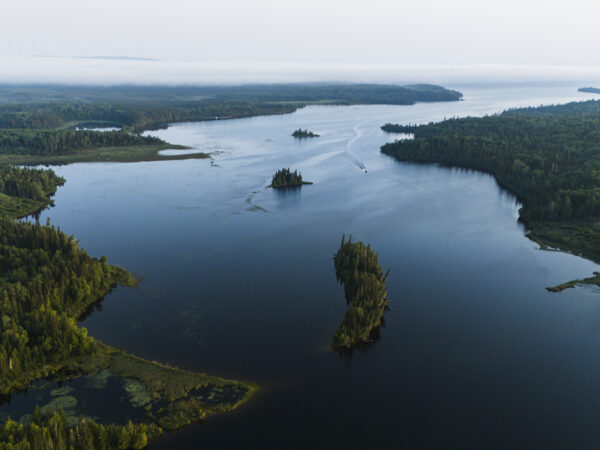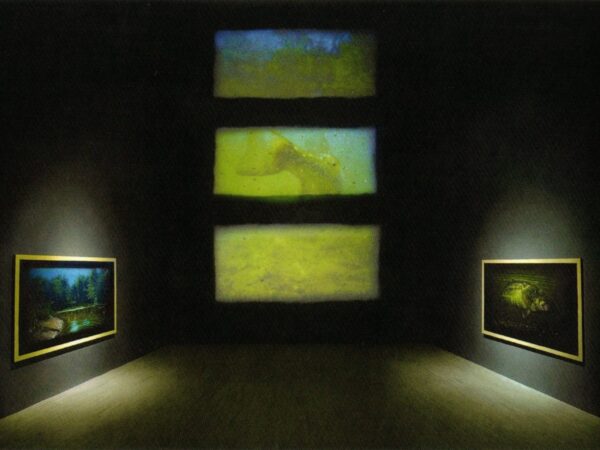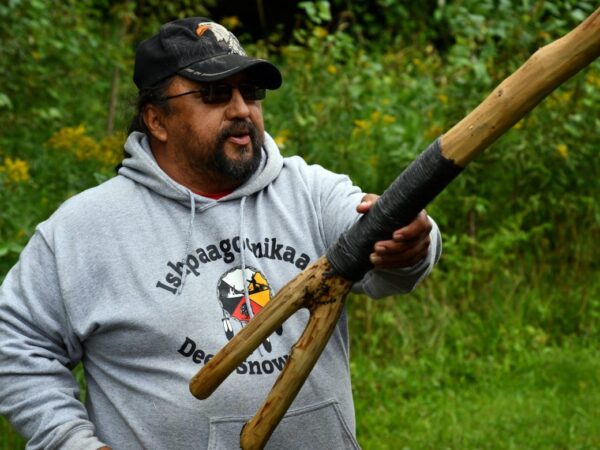After storms wreak havoc with a waterfront park in Duluth, the city rebuilds — but will the new park withstand the next storm? Chicago is a tough place for birds, but at one sanctuary on the city’s shoreline, endangered birds are finding a home. And in creeks on Lake Michigan’s western shore, researchers track the movements of suckers, a Great Lakes fish that’s misunderstood and underappreciated.
PROGRAM UPDATE: This episode originally aired in June 2021, and it was one of the GLN team’s favorites this year. So we brought it back around for the holiday season. Find updates below about the plover families, the condition of the Duluth lakefront, and research — the sucker fish and more — going on around the Great Lakes.
WHERE WE TAKE YOU THIS MONTH
Have a question about the Great Lakes or life in the region?
Ask Great Lakes Now, and if we can answer it, we might loop it into our coverage so others can learn too.
Submit Your Question
When to Watch?
Check your local station for when Great Lakes Now is on in your area.
Watch Live on DPTV
Wednesday, December 29, at 7:30 PM
STATIONS CARRYING THE SERIES
DPTV
Detroit, Michigan
WEAO
Akron, Ohio
WNEO-TV
Alliance, Ohio
WCML-TV
Alpena, Michigan
WDCP-TV
Bad Axe, Michigan
BCTV
Bay County, Michigan
WBGU-TV
Bowling Green, Ohio
WNED-TV
Buffalo, New York
WCMV-TV
Cadillac, Michigan
WTTW-TV
Chicago, Illinois
WVIZ-TV
Cleveland, Ohio
WKAR-TV
East Lansing, Michigan
WQLN-TV
Erie, Pennsylvania
WCMZ-TV
Flint, Michigan
WGVU-TV
Grand Rapids, Michigan
WPNE-TV
Green Bay, Wisconsin
WGVK-TV
Kalamazoo, Michigan
WHLA-TV
La Crosse, Wisconsin
WHA-TV
Madison, Wisconsin
WNMU-TV
Marquette, Michigan
WHWC-TV
Menomonie-Eau Claire, Wisconsin
WMVS-TV
Milwaukee, Wisconsin
WCMU-TV
Mt. Pleasant, Michigan
WLEF-TV
Park Falls, Wisconsin
WNIT-TV
South Bend, Indiana
WCNY-TV
Syracuse, New York
WGTE-TV
Toledo, Ohio
WDCQ-TV
University Center, Michigan
WNPI-TV
Watertown, New York for Ontario signal
WPBS-TV
Watertown, New York for U.S. signal
WHRM-TV
Wausau, Wisconsin
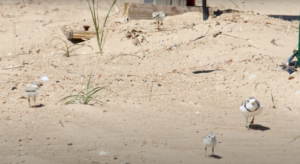
The happy family of Piping Plovers take a stroll on the beach at Montrose. Photo courtesy of Turnstone Strategies.
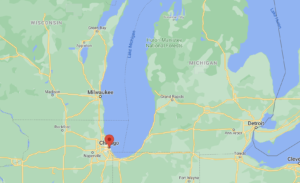
Plovers Come Over
SEGMENT 1 | Chicago, Illinois
About five miles north of downtown Chicago is a sanctuary that is a haven for birds and the humans who love to watch them.
The Montrose Point Bird Sanctuary allows birders to get up close and take some astounding photos. Some 350 bird species have been identified at Montrose.
But stealing the spotlight lately are two little birds named Monty and Rose. They are piping plovers, an endangered bird that hasn’t been seen in the Chicago area since 1948.
Monty and Rose have caused quite a stir within the bird-watching community. Their mere presence inspired a documentary film, and another one in the works. Bob Dolgan is the filmmaker, and a life-long birder. “I think birds open us up to a whole nother world,” he said. “You see a migratory bird species here in Chicago, that bird might be going all the way to the Arctic Circle in the summertime and then in the winter go down to somewhere in South America.”
Dolgan says birds play a vital role in helping us better understand our world. “If we know more about birds, that tells us so much more about the environment, about the challenges we have in terms of habitat loss, climate change, pollution, pesticides, you name it,” he said. “So birds are really a window into so many other issues.”
The story of Monty and Rose begins in 2019 when birders first saw they nesting on the busy beach and worked to create sanctuary space for them. Since then, Monty and Rose have attracted a huge following. In addition to a large group of bird watchers and children who come to Montrose on a regular basis, a team of more than 200 volunteers work on a rotating schedule to keep a close watch on the birds almost around the clock.
“I think these birds have been tremendous ambassadors to birding and birds,” said Tamima Itani, who is with the Illinois Ornithological Society. “Having wildlife within your city, it’s a great story of engaging people and bringing them on board.”
Here is other Great Lakes Now work on bird conservation:
-
Piping Plovers: Film fest spotlights endangered bird’s return to Chicago’s Lake Michigan shore
-
Habitat Focus: To help the birds, nonprofit organization looks to Great Lakes habitats
-
U.S., Canadian researchers conduct binational birds conservation research
-
Trump administration rule ends prosecuting industry for unintentionally killing birds
-
Piping Plovers: Despite new challenges, the birds make their comeback
-
Birds on Film: Filmmaker Bob Dolgan talks about Chicago’s piping plovers with Great Lakes Now
-
Sleeping Bear park officials ask visitors to stop building structures on lakeshore
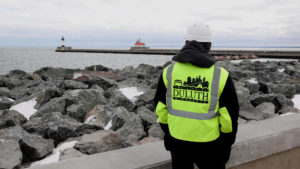
City of Duluth Construction Project Manager Mike LeBeau looks out over the armor stones protecting the newly rebuilt Lakewalk. Great Lakes Now photo.

Resilient Duluth
SEGMENT 2 | Duluth, Minnesota
Duluth’s Lakewalk is a major destination, both for locals and the more than 6 million people who visit the city every year. The paved trail hugs several miles of Lake Superior shoreline, with sweeping views of the waters and the city.
But three storms hit Duluth in 2017 and 2018, doing millions of dollars of damage to the waterfront and the walkway.
“It’s humbling,” said City of Duluth Construction Projects Manager Mike Lebeau. “I was down here, kind of during the first part of this last big storm, and people were leaving the area, the whole Canal Park district was flooding. Big stones were moving around, boardwalk sections flipping around.”
It’s an expensive project. Rebuilding just the half-mile section of the Lakewalk in Canal Park will cost about $17 million, but Duluth sees the Lakewalk as important enough to make the investment worthwhile.
“This is a key piece to not only local enjoyment, but the tourist trade for Duluth. So it’s definitely a payback,” LeBeau said. “And if it lasts 50 years in good shape. That’s a pretty small cost.”
But if more intense storms are part of our “new normal,” can we really expect to get 50 years out of anything built on the lakefront?
“I tend to answer that question by saying, we may not have seen the worst the lake can throw our way,” LeBeau said.
Here is other Great Lakes Now work on resilient infrastructure:
-
Green Infrastructure: Cities around the Great Lakes plan for a changing future
-
As Great Lakes pummel Michigan, beach towns rush to set development rules
-
Dune Dispute: Wisconsin Lake Michigan shoreline threatened by adjacent golf course development
-
Shrinking Shorelines: Climate change-related erosion threatens Great Lakes coasts
-
Coastal Concerns: Communities lack skilled staff and funding to tackle erosion and flooding
-
Soil hauled from Detroit park as part of storm water project

Suckers live in all five of the Great Lakes, and they swim upstream to spawn every spring. Photo courtesy Shedd Aquarium and Karen Murchie.
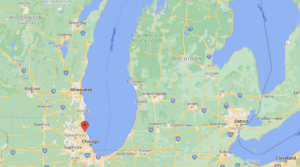
Best Supporting Fish
SEGMENT 2 | Highland Park, Illinois; Multiple Wisconsin locations.
For five years, Karen Murchie has been visiting some 17 sites along lakes Michigan and Superior shorelines to learn about a lesser-known fish: the sucker.
As the director of freshwater research at Chicago’s Shedd Aquarium, Murchie’s work will help build understanding of the migration patterns of suckers — a native fish population that is important to the creeks and streams that feed the Great Lakes.
“The suckers move from each individual Great Lake,” Murchie said. “They take a quiet creek and bring it to life in the spring. Not long after the ice is off the lake and starting to warm up, the fish start showing up and they’re here to spawn.”
Suckers’ eggs and excrement add nitrogen and phosphorus to creeks and streams, where they can be used by other organisms in the ecosystem, but suckers aren’t fished commercially or recreationally, so Murchie says we don’t know so much about their biology. That’s what Murchie—aided by a team of volunteers—is aiming to change, by collecting data, and even listening to the sounds of sucker spawning with an underwater microphone.
“They’re a really important fish,” says Murchie. “I say if there was an academy award for fishes… I would give suckers the academy award for best supporting fish because of these amazing services they provide.”
Here is other Great Lakes Now work on other native fish species:
Featured Articles
Digital Credits
The Great Lakes Now Series is produced by Rob Green and Sandra Svoboda.


